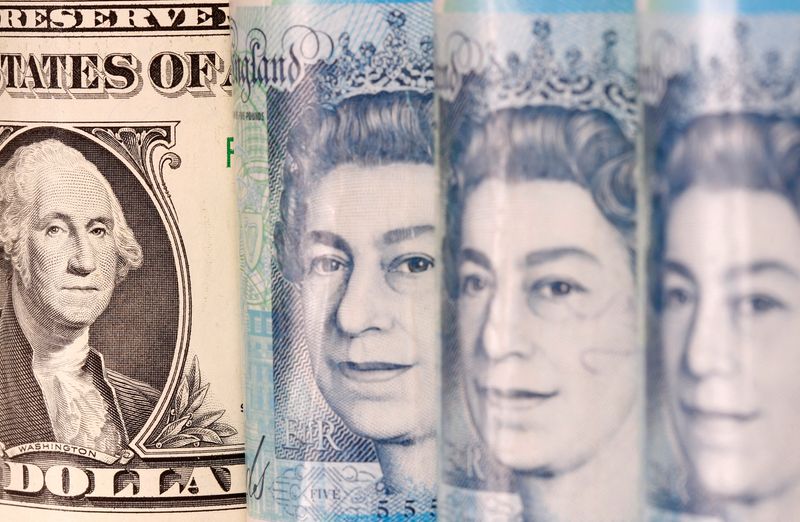Sterling and UK gilt prices tumble, pushing 10-year yield to highest since 2008
2025.01.08 12:29
By David Milliken and Harry Robertson
LONDON (Reuters) -British government bond prices fell sharply for a second day on Wednesday, pushing 10-year yields to their highest since August 2008, while 30-year yields hit a new 26-year high in a move that will add pressure to government finances.
Sterling tumbled as well, shedding more than 1.2% against the U.S. dollar to hit its lowest since April at $1.2322, in a move that had no obvious trigger from economic data.
Thirty-year gilt yields – which hit a record on Tuesday – rose by more than 13 basis points to strike their highest since August 1998 at 5.383%.
Benchmark 10-year yields rose as high as 4.821%, also up 12 bps on the day, breaking past a level that had held since October 2023 and on track for its biggest daily price fall in nine months.
Two-year gilt yields rose to their highest since February 2024 at 4.576% while five-year yields reached their highest since October 2024 at 4.573%, both up more than 10 bps on the day.
Gilts underperformed U.S. Treasuries and German government bonds, whose yields rose by around 4 basis points.
“This is a global move but it’s being led by the UK,” RBC Capital Markets’ fixed income strategist Megum Muhic said.
“Potentially, a reason why is the technical break is more significant versus other jurisdictions. The UK is at highs of this cycle whereas in Europe and the U.S. this isn’t the case. We’re in new uncharted territory,” he said.
Thirty-year German government bond yields are the highest since July 2024 while 30-year U.S. Treasury yields are the highest since November 2023.
RISING YIELDS
British government bond yields have climbed steadily since September, reflecting reduced expectations of Bank of England rate cuts, extra borrowing in the new government’s Oct. 30 budget and higher U.S. Treasury yields as President-elect Donald Trump is expected to pursue a loose fiscal policy and raise tariffs.
Financial markets price in just two quarter-point rate cuts by the BoE this year – which would take Bank Rate from 4.75% to 4.25% – compared with four seen by economists polled by Reuters last month.
British mid-cap shares were down 1.6% at 1507 GMT – on track for the biggest daily fall in five months – while the blue-chip FTSE-100, whose globally-focused members often benefit from sterling weakness, was 0.11% lower.
Thirty-year gilt yields are now higher than the 5.25% level at which the BoE’s Bank Rate peaked in August 2023 and analysts struggled to find a reason for the scale of the latest moves – or to predict a reverse.
“Although we think structurally the rate should be lower, changing direction may need time,” Michiel Tukker, senior European rates strategist at ING, said.
“Sticky inflation, government spending, higher US rates and supply pressures will keep upward pressure on GBP rates. Sterling has started to sell off, but further weakness should be limited – since this is not a sovereign crisis,” he added.
Falls in both sterling and gilt prices were much sharper in September 2022 during the turmoil that followed former Prime Minister Liz Truss’ “mini-budget”.
Even so, if gilt yields stay high it will create a headache for finance minister Rachel Reeves. The government’s budget watchdog is increasingly likely to predict she will overshoot her medium-term borrowing targets when it updates its forecasts on March 26.
Deutsche Bank (ETR:) chief UK economist Sanjay Raja estimated the latest rise in gilt yields – if sustained – would add around 10 billion pounds ($12 billion) a year to Britain’s annual debt interest bill compared with the Office for Budget Responsibility’s Oct. 30 forecast.

“What does this mean for the fiscal outlook? Spending cuts, more borrowing, and likely a little more taxation to close the emerging fiscal hole,” he wrote.
($1 = 0.8112 pounds)






